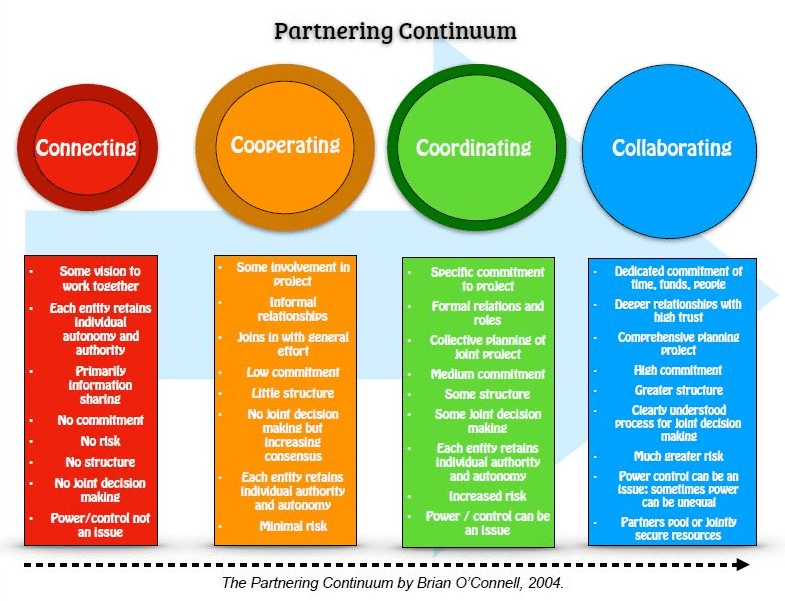Written by Sarah Sisco, Curriculum and Professional Development Director at the American International School of Jeddah
"You can't make me." Maybe that's a phrase you've heard before when implementing new processes and pioneering change in your school.
This was the challenge I faced in my first month as the sole curriculum professional in a school with 120 faculty members. Ahead of me, I had the task of leading curriculum development and documentation when I had no evaluative authority over teachers.
Far too often, the teachers would tell me, “That’s not my job,” when I talked to them about Atlas.

Building Partnerships to Lead Change
Overall, teachers had extremely low buy-in to engage with Atlas. Buy-in is “the fact of agreeing with and accepting something that someone suggests” (Cambridge English dictionary). Some indicators of this low buy-in were that staff members did not...
- Stay engaged during curriculum meetings
- Come to meetings prepared or came prepared for other tasks
- Perceive visible leadership at curriculum meetings
- Hear and relate to a shared vision of curriculum
Clearly, buy-in needed to change before progress could be made with our written curriculum. The solution? Powerful Partnerships.
Two years later, no one says to me “That’s not my job.” We have a shared vision of where our curriculum will take us. In a year and a half, we went from having almost zero written curriculum to having units calendars, course descriptions, and student learning outcomes for instructional units documented for 78% of our courses. It was a huge win for all of us.
Guiding Questions
- What reactions do you get from teachers when “curriculum” time comes up?
- What would you like to hear teachers saying about curriculum at your school?
What is a partnership?
“Partnership” describes a relationship. A successful partnership has two or more individuals who work towards a shared vision as equals. Partnerships work best when there are common goals that are better achieved together than separately.
Of course, not all partnerships are created equal. All partnerships exist on some kind of partnership continuum. The continuum describes a range of partnership possibilities, which vary depending on levels of trust and commitment between partners, willingness to share resources or turf, the amount of change that is required, levels of interdependence, the risk involves, and power struggles. Partnerships on both sides of the continuum have their advantages and disadvantages.

Guiding Questions
- What partnerships have you had before--both good and bad? What distinguished the good partnerships from the bad ones?
How Can Powerful Partnerships Help You?
Since leadership relies on the ability to influence and motivate others, partnering with others extends our leadership reach. Partnerships allow everyone to influence, motivate, inspire, and secure buy-in by building a sense of collective ownership.
Everyone can benefit from partnerships! Specifically, partnerships can give you access to the diverse viewpoints, authority, expertise, or experience of others. Partnerships can increase your understanding of other parts of a school system. At schools where collaboration is important, making your partnership visible models collaborative decision-making.
Last but not least, “the co-creation of new knowledge through a learning partnership challenges each person to examine their previous ways of knowing, and their core values and beliefs” (Robertson, 2009). A strong, collaborating partnership could be the best form of professional learning you have ever experienced!
How Can You Build Powerful Partnerships?
All partnerships begin with you. Before reaching out to a partner, you must clarify your vision. What are the goals for the school as defined in your mission and/or vision statement? What role do you have to play in school improvement?
Next, identify some potential partners. Partnerships are relationships, so try to build on positive working relationships with people you already respect and trust. With that list of potential partners, do your research. What goals do your potential partners have? What is their vision?

Your research should reveal some win-win situations. A win-win situation is where both of your goals are better achieved together than if you operated individually. For example, I built a partnership with our Middle School Principal after demonstrating how curriculum development work supported his goal of transitioning the school to standards-based grading. Both of us moved closer towards our individual goals than we could have on our own.
Prepare to advocate for a shared vision of accomplishing your win-win situation. You will need to explain how you can help others achieve their goals. With your list of potential partners and win-win situations, it is time to make the initial approach. You probably already have ideas about how to approach your potential partner, because you have done your research!
Remember to…
- Approach as an equal--you have as much to learn from them as they can learn from you.
- Advocate for yourself--sometimes others need to be convinced that they should dedicate their own time (or their staff members’ time) to your ideas.
Securing the agreement of a partner is just the first step to building a powerful partnership. Cultivate the partnership and be prepared to maintain and sustain it.
Guiding Questions
- What win-win situations do you see in your school?
- Who might be a Powerful Partner for you?
Contributing Author:
Sarah Sisco is the Curriculum and Professional Development Director at the American International School of Jeddah, her first leadership role. She previously taught in Belgium, Colorado, and Tunisia.
WORKS CITED
[#TeacherProblems Meme]. (n.d.). Retrieved from
https://www.pinterest.com/pin/253327547768671676/
Doig, Cheryl (n.d). The visible school leader. In Teachers Matter. Retrieved from
http://lms.pls3rdlearning.com/content/courses/AAIE/vision_and_mission_to_guide_intern
ational_schools_COHORT/resources/u4/the-visible-school-leader.pdf
Partnership. (n.d.). In Collins English Dictionary. Retrieved September 28, 2018, from
https://www.collinsdictionary.com/dictionary/english/partnership
Riggs, E., Block, K., Warr, D., & Gibbs, L. (2013, April). Partnership Continuum .
Retrieved from https://www.researchgate.net/figure/Partnership-continuum_fig1_236581646
Robertson, J. (2009). Coaching leadership learning through partnership, School Leadership &
Management, 29:1, 39-49, DOI: 10.1080/13632430802646388

